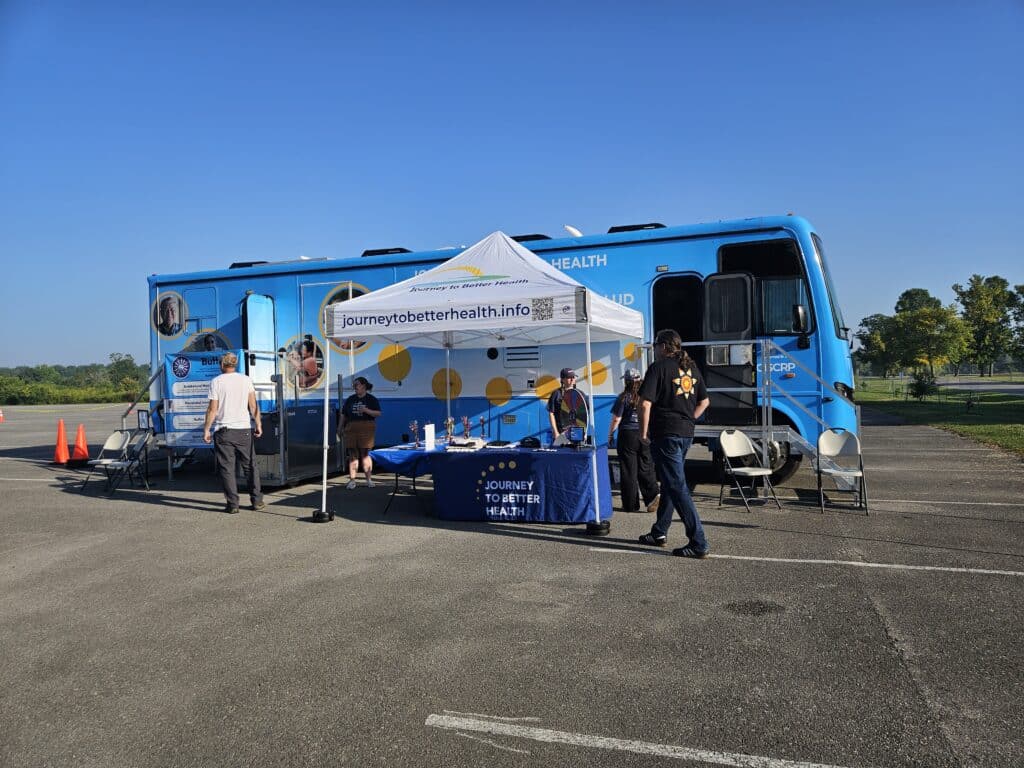In a clinical trial, the participant is cared for by the physician investigator and research staff, in addition to the standard of care that is concurrently being provided by their primary care physician. Once the trial is completed, ask how care will be transitioned, and if there is an option available to remain in the care of the study staff.
“How are you going to work with our primary care provider to make sure there is no gap, if the medication is something we want to stay on?” says Tracy. Other considerations are whether the study medication will be covered by the participant’s medical insurance and the length of access to it.
“People who are conducting clinical trials are the best of the best,” says Tracy. “They’re going to know very much about the research, very much about the treatment you’re on, and they’re going to know a lot about the process. Our experience, in the multiple trials that we have done, was that we could stay, if our insurance (in the United States) was now going to cover the medication. We had to work that out.”
Richie says another key for a successful transition is to “Prepare yourself to advocate, either as a patient or a caregiver, for a friend or loved one participating, and do it early.” Conduct research on clinical trials and the informed consent process, to make sure that all your questions get answered at the onset of the study, and that you understand exactly what is involved.
“Sponsors aren’t necessarily bound to continue providing access (to a treatment) after a trial ends. But when you’re having that conversation during the informed consent process, within that informed consent form, itself, all of this should be outlined. It’s good to check. If you are not sure, you can always reach out to your site coordinator, your PI (Physician Investigator). Often times, there are open label follow ups, long term extensions, and a couple of other possibilities, as well, where sometimes an investigational product will be made available after the trial wraps up. That is especially common after early Phase and first-in-human trials,” says Richie.
Biopharmaceutical companies and drug sponsors may have programs to assist families with the extra cost of the medication, after the clinical trial ends. This is dependent upon whether the product is already approved and marketed. There are other tools available, including state-level medication assistance programs. For investigational products that are not yet approved, there are mechanisms where a pharmaceutical company may be able to intervene to continue providing the investigational product after the clinical study concludes. And there may be the possibility of participating in another clinical trial. If a participant has not yet received the investigational medicine during the clinical trial, there may be an open access arm available at the end of the trial.
“Sponsors really do try to make that happen, as much as possible,” says Tracy.
Dana emphasizes the importance of networking with other patients, patient advocates, caregivers and advocacy organizations.
“Parents, and having those connections in the community, have helped us immensely. Connecting with other families and other people who are experiencing what you’re experiencing is huge. You can get some of the best information,” says Dana. This can include medical articles about the latest developments, or resources to help navigate day to day details. For example, Dana learned about a financial assistance resource called needhelppayingbills.com from another rare disease parent.
Dana recommends connecting with a local representative from the pharmaceutical company that can help with questions or concerns if there is one in your area.
“I think it’s imperative that you make those kinds of connections,” says Dana. “You can make them at the beginning, when you’re in the trial, or with some of the questions towards the end. Find out who that person is locally. They’ve had the experience of interacting with other parents, caregivers and the people involved in the studies.” The representative may be able to offer resources, such as discount coupons for medications or assistance with grassroots fundraising efforts.
“Generally, this is a really collegial industry. I think for just about everyone, it’s all about making those connections for the good of the patient. If you can get to the right person, you’re going to have a warm reception,” says Richie.
How information is shared with clinical research participants at the conclusion of the study is outlined during the informed consent process. If there are multiple sites and institutions involved in the clinical trial, enrollment rates and timetables may impact when the results of the clinical study are shared. The information has to be collected and analyzed. You can find information on clinicaltrials.gov and from advocacy groups and non-profits in your respective indications and therapeutic areas.
“Many sponsors will share this information directly with patients, if you ask,” says Richie.
“I think no matter where you live, if you are a patient in the trial or a caregiver, we all tend to have the same exact questions,” says Tracy. “Thinking about transitioning is a really anxious time for patients and families. Having those conversations start early, about the questions we’re all going to have, is really important.”
To learn more, you can view the webinar here. Access the companion infographic here.
You can view part-one of the series, “Rare Disease Clinical Trials: Being Informed About Clinical Research” here and part-three, “Rare Disease Clinical Trials: After Participation, Paying It Forward” here.
Access the companion infographics:
- Clinical Research Participation Roadmap | Part-one here.
- A Garden of Questions to Ask Before the Clinical Trial Ends | Part-two here.
- Paying it Forward in Clinical Research | Part-three here.
Authored by: Melissa E. Daley, Communications & Marketing Manager, CISCRP




